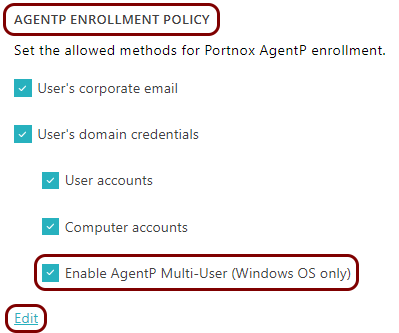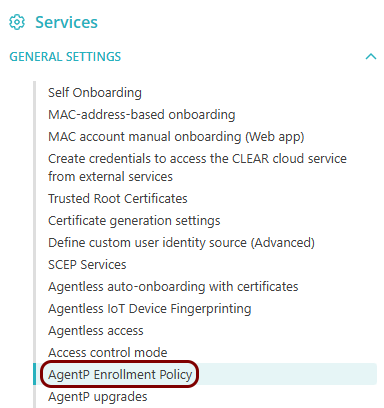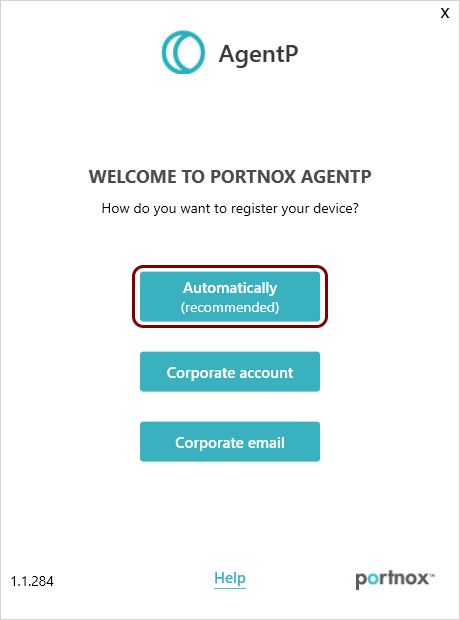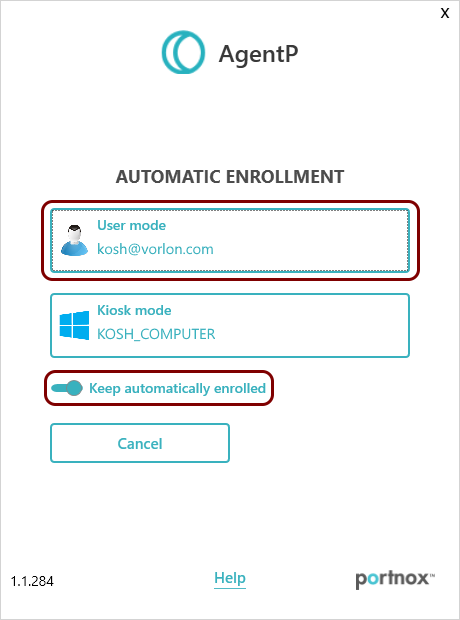In this topic, you will learn how to onboard using Portnox™ AgentP, a Windows 10 computer with multiple users, and a Wi-Fi or
wired network managed by Portnox™ Cloud.
Important: Before you turn on multi-user mode or switch from user certificates to computer certificates, prepare
your Entra ID or Active Directory groups correctly. If AgentP starts using computer certificates to authenticate computers,
and you did not configure your computer accounts to be part of an Entra ID or Active Directory group that is mapped to a
Portnox Cloud group, Portnox Cloud will assign all newly created computer accounts to the Default
group. If you did not configure the Default group to allow network access, computers will lose
network connectivity.
For more information on multi-user mode, see the following topic: AgentP and certificates.
-
Integrate Portnox Cloud with Microsoft Entra ID or local Active Directory.
-
Enable AgentP multi-user mode in Portnox Cloud settings:
-
In the Cloud portal top menu, click on the Settings option.
-
-
In the AgentP Enrollment Policy section, click on the Edit link.
Then, activate the Enable AgentP Multi-User (Windows OS only) checkbox and click on the
Save button.

Note: If you are working in a hybrid environment with Entra ID and Active Directory, by default, Portnox Cloud
uses credentials from Entra ID for automatic enrollment. To use Active Directory credentials instead,
activate the Prefer Active Directory over Entra ID during unattended enrollment
checkbox.
-
Ensure that in your Portnox Cloud group the networks are configured to use both user and computer certificates.
-
Download and install Portnox AgentP
-
Enroll AgentP Automatically.
-
Select User mode, and activate the Keep automatically enrolled
switch
-
Run AgentP and switch the operating system user to test if AgentP changes to a different user.
AgentP needs a few seconds to switch to a different user. You can see the logged in user in the
About tab of the AgentP user interface.
To speed up the process of switching to a new user, you can click on the Sync now button in
the About tab of the AgentP interface.

Important: If AgentP is already installed and enrolled manually, before you switch to unattended mode, you
must manually unenroll it by clicking on the Deactivate button in the AgentP user interface.
Otherwise, AgentP will remain enrolled with the manually onboarded user and will not automatically switch to the
current Active Directory or Entra ID user.






